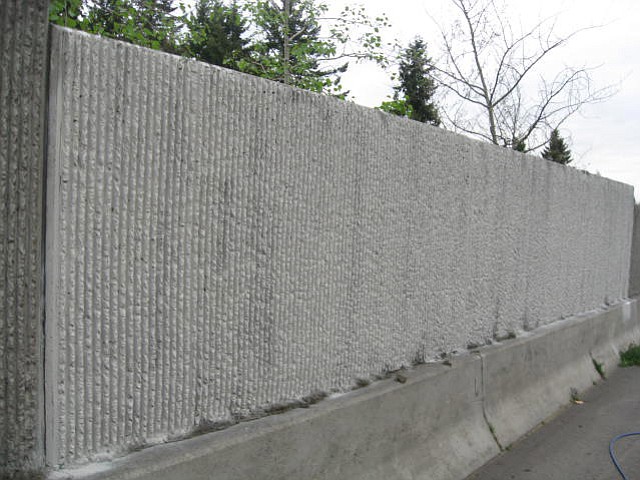When Cindy Franke sees graffiti along Interstate 5, she doesn’t call to report it. She doesn’t wait for someone else to take care of it.
She grabs some paint and goes to work.
“My goal is to get out there within 24 hours,” Franke said. “The faster it gets off there, the better.”
The Vancouver resident is among a handful of local volunteers tasked with covering up graffiti as part of the state’s Adopt-A-Highway program, which primarily aims to clean up litter along roadways. Washington’s Adopt-A-Highway program started in 1990.
The Washington State Department of Transportation added a separate graffiti removal arm to its local efforts in 2012, and officials say it has so far produced good results.
Each of the members of the graffiti-removal team is assigned a specific stretch of highway, said Brian Gibbs, WSDOT’s acting roadside maintenance supervisor for the region. WSDOT supplies the paint and safety gear — and permission — and approved volunteers are free to cover up fresh graffiti as soon as they see it.
The arrangement allows WSDOT to address an issue that doesn’t rank high on its list of priorities. It also allows the agency to better tackle the safety and mobility issues that come first, Gibbs said.
“It frees us up for the other work that we do,” Gibbs said. “The more time we have for safety issues on roadways, it’s saving taxpayers money.”
Clark County’s problem spots for graffiti include stretches of I-5 and state Highway 500. Taggers often hit the back of sound walls, Gibbs said. The walls built along with the new interchange at St. Johns Boulevard and Highway 500 have also been targeted.
Franke lives near I-5 in Vancouver north of the Main Street overpass. She’s been fighting graffiti along the freeway near her home for more than a year, and Franke said the wall there is tagged every two months or so.
But she and others know that removing graffiti quickly reduces its impact — and makes it less likely to appear in the same spot again.
“We’re watching for it,” Franke said. “They can keep painting, but I’m going to keep painting over them.”
WSDOT doesn’t give volunteers a blanket authorization to go out and hunt and remove graffiti wherever they see it. Franke, for example, is only allowed to paint over the spot near her home.
As of last week, Franke said it’s been about three months since she’s seen graffiti there. In other words, it’s overdue. Or the removal efforts are having the desired effect, she said.
“They may be getting the message,” Franke said. “It’s gone in 24 hours.”




